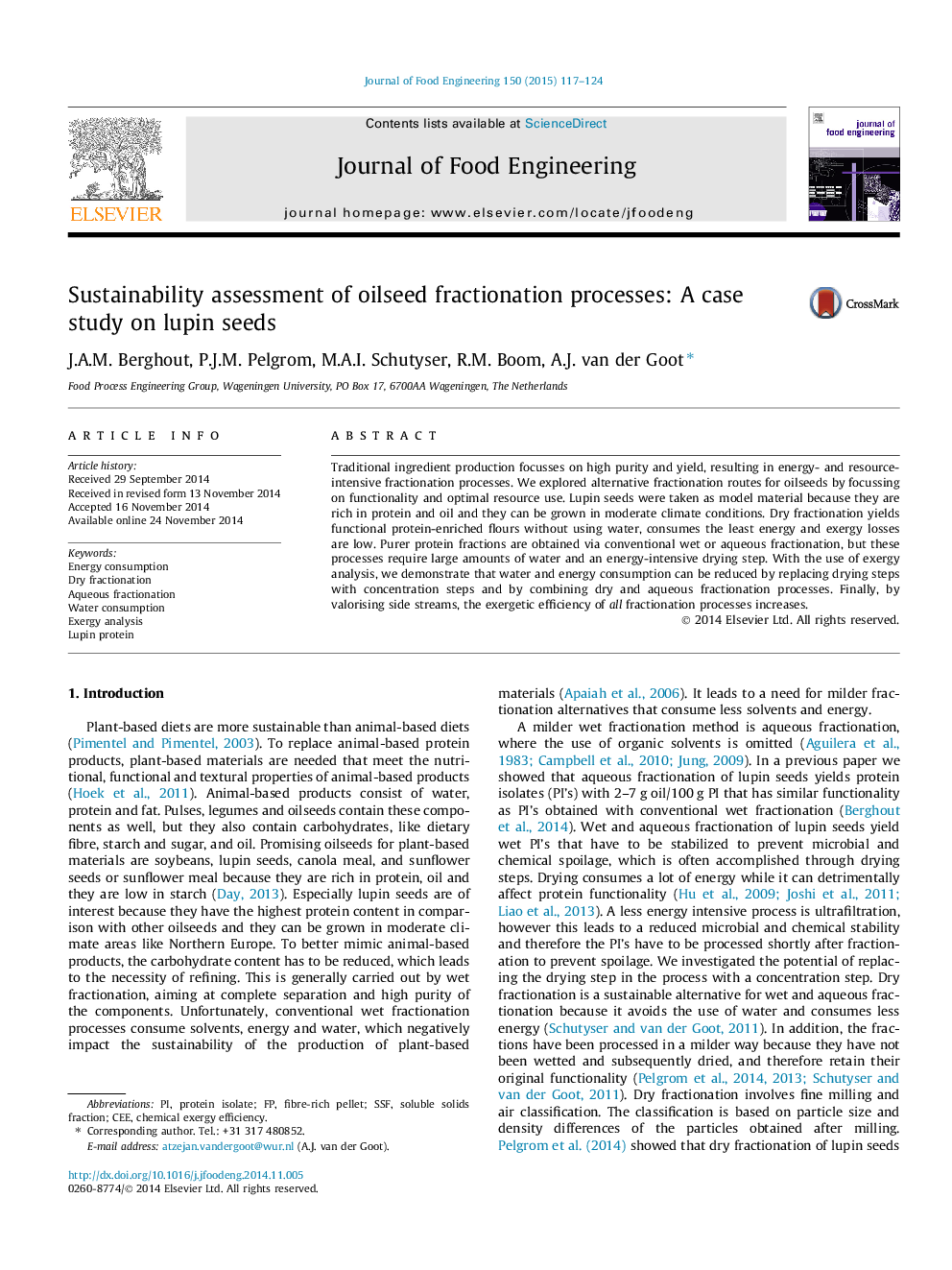| Article ID | Journal | Published Year | Pages | File Type |
|---|---|---|---|---|
| 6665620 | Journal of Food Engineering | 2015 | 8 Pages |
Abstract
Traditional ingredient production focusses on high purity and yield, resulting in energy- and resource-intensive fractionation processes. We explored alternative fractionation routes for oilseeds by focussing on functionality and optimal resource use. Lupin seeds were taken as model material because they are rich in protein and oil and they can be grown in moderate climate conditions. Dry fractionation yields functional protein-enriched flours without using water, consumes the least energy and exergy losses are low. Purer protein fractions are obtained via conventional wet or aqueous fractionation, but these processes require large amounts of water and an energy-intensive drying step. With the use of exergy analysis, we demonstrate that water and energy consumption can be reduced by replacing drying steps with concentration steps and by combining dry and aqueous fractionation processes. Finally, by valorising side streams, the exergetic efficiency of all fractionation processes increases.
Keywords
Related Topics
Physical Sciences and Engineering
Chemical Engineering
Chemical Engineering (General)
Authors
J.A.M. Berghout, P.J.M. Pelgrom, M.A.I. Schutyser, R.M. Boom, A.J. van der Goot,
